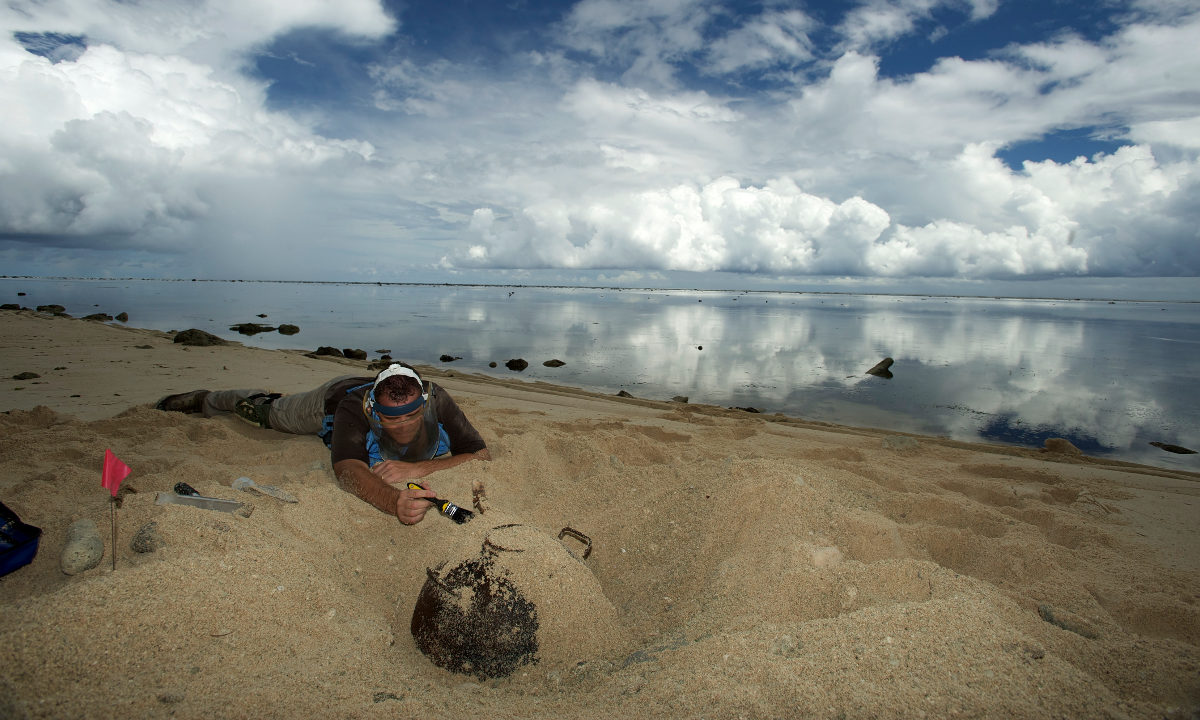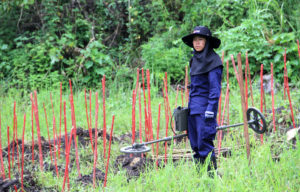
Many countries still struggle to remove old mines from wars that are long over. Here in Palau. Photo: CCBY Cleared Ground Demining - Todd Essicks
Analysis: Paul, the princess, and the people cracked the land mine problem
It has become so unpopular to use land mines that most states refuse to use the unpredictable weapons. This month, the treaty against land mines celebrates its 20th birthday, and it is one of the best examples of how people pressure can change the world.
Share
When a war is over, the soldiers usually go home and take most of their weapons with them. But if they planted land mines, these often remain, causing a high number of civilian victims year after year, even many years after the conflict has ended. Fortunately, today there is an increasing reluctance to use the hidden weapons, and the majority of countries have now stopped producing and placing landmines. At the same time, many countries have decided to destroy the mines they had in stock.
According to the Landmine and Cluster Munition Monitor, a total of 53 million land mines have been neutralised since 1999, and there is a clear progress in clearing the areas where mines have been planted. Over the last couple of years, the world has cleared about 170 square kilometers every year, which corresponds to approximately twice the size of Copenhagen. In February, this led to Algeria being declared free from land mines after three decades of work.
The fight against the mines began 20 years ago, in December 1997, when the international agreement to ban land mines – the Ottawa Treaty – was signed. At that time, there were about 110 million mines in the ground across the world. Some of these minefields have now been cleared, and none of the 163 countries currently participating in the agreement have placed new landmines. At the same time, most of the countries that have not signed the agreement nevertheless comply with the main elements of the treaty. In recent years, Syria and Myanmar are the only exceptions.
However, the fact that the Ottawa Treaty became a reality back in the 1990s must not be taken for granted. The adoption of the treaty was, in particular, the result of extensive international political work from an unprecedented coalition of human rights defenders, veterans of war, and humanitarian organisations, uniting as the International Campaign to Ban Landmines (ICBL).
Paul and the Princess made the mines unpopular
ICBL tried to apply maximum political pressure, for example by organising large-scale collections of protest signatures. But the campaign really got its popular breakthrough when photos of the British princess Diana hit the front pages, showing the extremely popular princess visiting an active minefield in Angola, while wearing full protective gear.
In the following months, Princess Diana joined the awareness campaign. Although at that time she was criticised, especially by the British parliamentarians who considered her case as inappropriately political, there is today a broad consensus that the Princess’ efforts were of major importance for the final agreement on the ban on land mines. Princess Diana died in a car accident in Paris just half a year after the trip to Angola, and therefore she did not live to see the first 121 countries signing the Ottawa Treaty. Nor was she able to witness that the campaign against land mines received the Nobel Peace Prize.
But other celebrities have carried on with her mission. Paul McCartney, in particular, has decided to inherit the land mine legacy of Diana. In this, he was joined by former wife Heather Mills. Herself an amputee from losing a leg in a motorcycle accident, she actively went into the fight against the weapons which have cost so many people lives and limbs worldwide.
The number of victims rises again
Although the growing resistance against planting land mines is crucial to reaching the goal of no children or adults having to fear for their life and limbs when they play or work the land, the mine problem is still far from being solved. Many of the participating countries in the treaty are lagging behind when it comes to finish clearing their minefields. And according to the Landmine Monitor, the help for mine victims is still often insufficient.
At the same time, the number of new civilian victims of land mines, cluster bombs and other explosive war junk has risen sharply over the past two years, after several years of decline. The increase is mainly due to the conflicts in Afghanistan, Libya, Myanmar, Ukraine, and Yemen. According to Human Rights Watch, it is now mostly the non-state armed groups that plant most of the mines and improvised explosive devices. This is a setback for the goal of a mine-free world, because these armed groups are not subject to control by any state and are therefore not formally covered by the convention.
But even among many of the violent non-state groups, there is now more reluctance to plant mines, according to the Landmine Monitor. The campaign and convention against the mines have given the mines a stigma that also affects non-state groups. At least 65 of these groups have since 1997 declared that they no longer want to use land mines.
Denmark has been a member of the treaty to ban land mines from the start, but it was only in 2012 that the last 8000 old German mines from the Second World War were cleared from Danish beaches. Today, Denmark is not only mine-free but also plays an active part in removing landmines in other countries. This work is done through the humanitarian organisations Danish Church Aid and Danish Demining Group, which are some of the most active demining organisations in the world.







